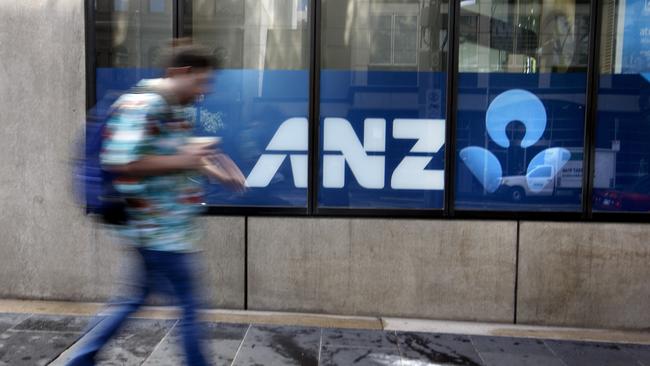Offshore banks waiting to see where cash rate ends up
How Australia’s economy fares and where interest rates settle, will decide whether offshore banks curtail activities in this market.

How Australia’s economy fares through this cycle of rate increases and where the cash rate settles relative to other jurisdictions will play a big role in whether offshore-based banks curtail activities in this market.
That is the view of MinterEllison’s 2022 Foreign Bank Tracker report, which identifies a risk that some offshore-based banks repatriate capital if economic conditions become tougher in their home markets.
“It’s a risk, but it comes down to the relativity between the degree of pain we suffer here and the home jurisdiction,” said John Elias, the law firm’s lead partner on the report.
“If there is pressure in the home jurisdiction, the lesson from history is the banks will pull their horns in and focus on their home jurisdiction for a little bit.”
But the report said that, while the inflationary environment many markets were grappling with may lead to a decline in growth by foreign banks in Australia, MinterEllison does not expect large offshore players to exit the country.
“Indeed, some of the larger foreign banks (such as JPMorgan, HSBC, Rabobank and ING) with large stable deposit bases may have an advantage,” the report said.
It also noted an expected slowing in credit growth as interest rates rose aggressively to cool inflation.
Mr Elias said given the rationalisation that had taken place in Australia’s banking sector over the past three years, it was important the foreign banks maintained their local presence.
“To have the foreign banks continuing to put capital into Australia is pretty important from that competitive point of view … and for pricing dynamics,” he said.

The latest round of consolidation in the sector saw National Australia Bank buy digital player 86 400 and Citibank’s local retail operations. Bank of Queensland acquired industry superannuation fund-backed ME and is working through an integration.
ANZ is forging ahead with plans to get its $4.9bn purchase of Suncorp’s banking operations, announced this month, approved by regulators and the Queensland and federal governments.
As well as the acquisitions, Investec announced its exit from Australia in 2020, as part of a strategy to retreat to core markets and simplify its business.
But despite that exit, the MinterEllison report also pondered whether the Jack Dorsey-led Block would start banking operations in Australia after acquiring buy now, pay later group Afterpay.
“With strong merchant and consumer relationships, it seems plausible that Block will seek to enter the banking market in Australia in its own right,” it said.
The report highlighted a quiet year in 2021 for new Australian banking licences issued to offshore-based players.
“The only foreign entrant was Barclays Bank, reobtaining its foreign authorised deposit taking (banking) licence,” it said.
Mr Elias said: “I suspect it will be a bit quiet on the new (foreign bank) licence front for a while, so it’s really to the extent that the incumbents continue to ramp things up.”
Barclays left the Australian market in 2016 but has re-entered largely via a holding in new investment bank Barrenjoey. In May, Barclays increased its Barrenjoey stake to 18.2 per cent.
MinterEllison’s report showed that North American banks grew the fastest, with resident Australian assets rising 17 per cent in 2021. That was buoyed by JPMorgan more than doubling its resident assets in Australia, while Bank of America’s assets rose by about a third.
The Foreign Bank Tracker assesses all resident assets – including loans – held by offshore-based banks, by drawing on Australian Prudential Regulation Authority data.
The picture for European and Asian banks operating in Australia was less rosy.
European bank assets rose by 5 per cent, underpinned by growth at French and Dutch banks, but the resident Australian assets of Asian banks were flat in 2021, albeit after more than 10 per cent growth in each of the three preceding years.
European banks still have the biggest representation in Australia in dollar terms at more than $260bn, despite their assets increasing at the slowest annual rate since 2016. Asian banks have the next largest pool of assets in Australia, followed by North American banks.
“Many banks from North Asia and South Asia, namely Japan (MUFG Bank) and South Korea (Woori Bank and Shinhan Bank), China (Bank of China, China Construction Bank, Bank of Communications, Agricultural Bank of China), Taiwan (Taishin International Bank) and India (State Bank of India and Bank of Baroda) reduced resident assets,” the report said.
“This was offset by growth from other banks, particularly from Singapore.”
Mr Elias highlighted the “massive focus” on the financing of renewable energy as likely to aid foreign bank growth in Australia.
“Investment in green technology is clearly a large part of what’s going on. Australia’s got a whole bunch of natural advantages there,” Mr Elias said.
But quieter mergers and acquisitions activity in the Australian market this year, after a record period in 2021, may weigh on the activities of foreign banks.



